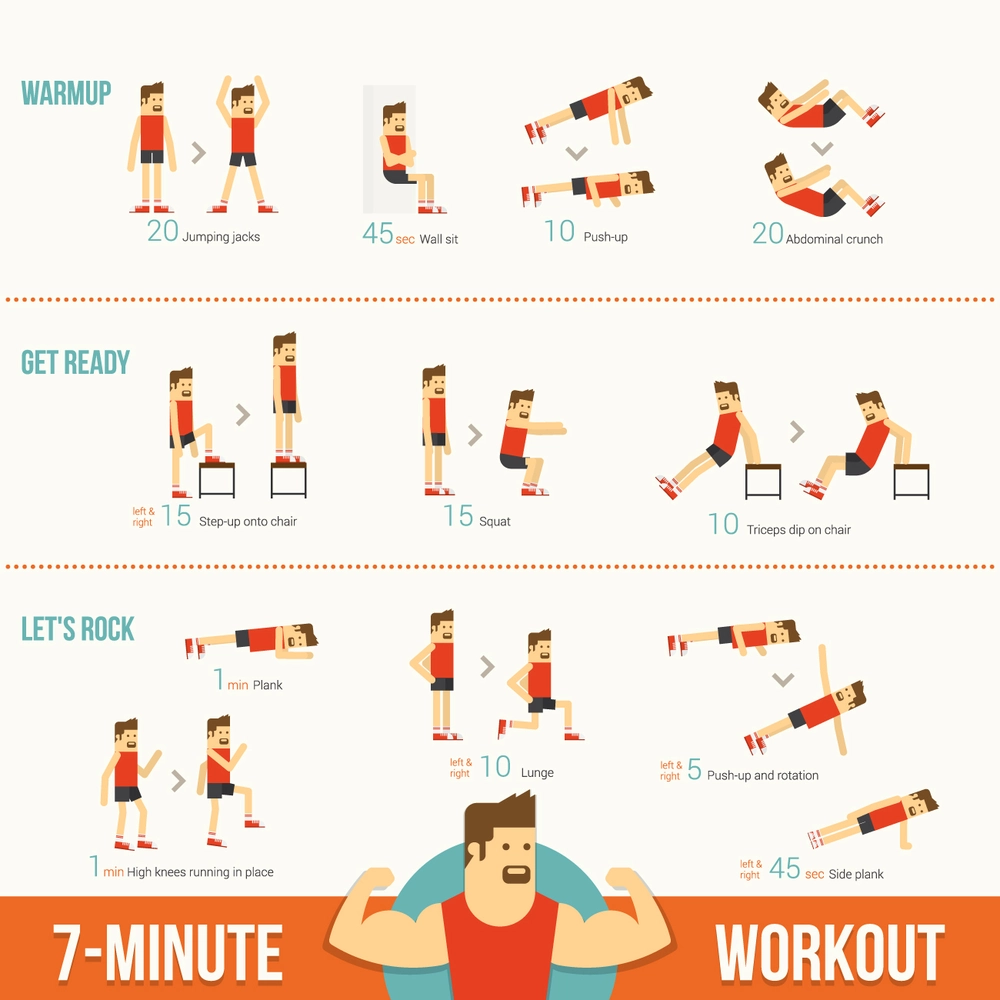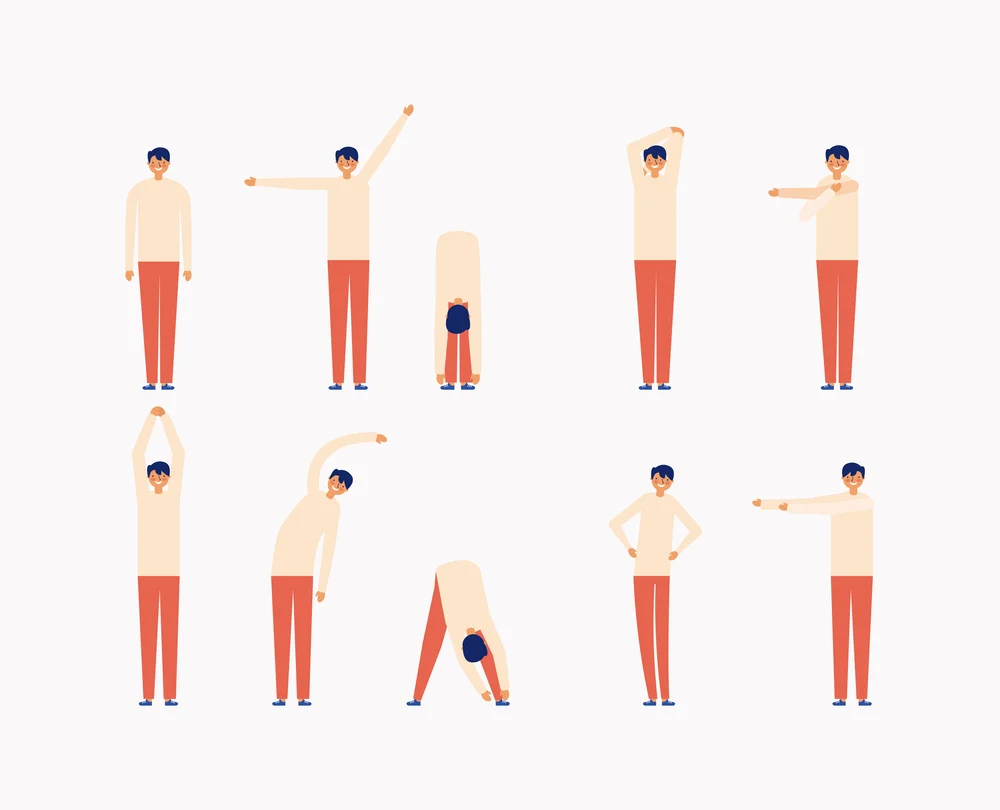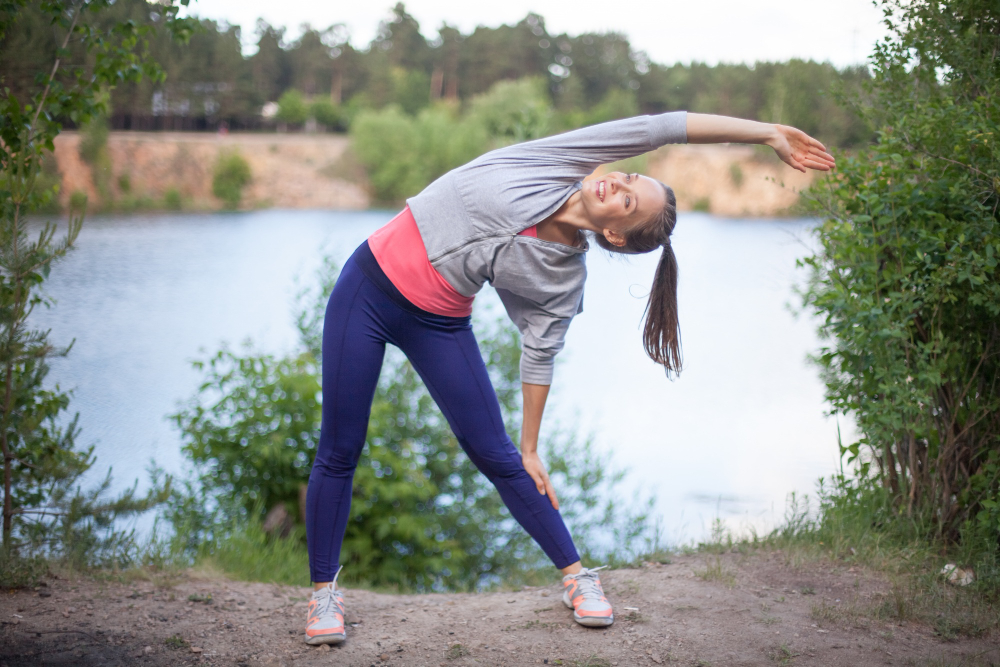A complete workout routine is more than just the main exercise session. It is a holistic process that includes essential elements like warm up and cool down exercises. These components, often overlooked, are integral to achieving optimal fitness results and maintaining overall health. Warm-up exercises are preparatory steps that gently introduce your body to the physical stress of a workout, while cool-down exercises help your body recover and return to its normal state post-workout.
Warm up and cool down exercises serve as the bookends to your main workout, providing a safe transition zone for your body. They are not just optional extras, but rather, they are crucial steps that help to maximize the effectiveness of your workout and minimize the risk of injury. Warm ups gradually increase your heart rate and circulation, preparing your body and mind for the workout ahead. On the other hand, cool down exercises help to gradually decrease your heart rate and relax your muscles, aiding in recovery and reducing post-workout stiffness and soreness.
This article aims to shed light on the importance of warm up and cool down exercises in your workout routine. It is not just about the intensity or the duration of your main workout, but also about how you prepare for and recover from it. By understanding and incorporating these exercises into your routine, you can enhance your workout performance, prevent injuries, and improve your overall fitness experience.
Understanding Warm Up Exercises

Warm up exercises are a series of low-intensity activities designed to prepare your body for the more strenuous workout to follow. They are the prelude to your main exercise routine, gently easing your body from a state of rest to a state of activity. Warm ups can include activities like light jogging, stretching, or performing a less intense version of the upcoming workout.
During warm up, several physiological changes occur in your body. Your heart rate gradually increases, enhancing the blood flow to your muscles. This increased circulation warms up your muscles, making them more flexible and efficient, and less prone to injury. Additionally, warm-ups also stimulate your respiratory system, preparing your body for the increased oxygen demand during the main workout.
However, there are common misconceptions about warm-up exercises. Some people believe they are unnecessary or a waste of time, especially if the main workout is short. Others might skip warm-ups to save energy for the main workout. These beliefs are misguided. Warm-ups are essential regardless of the workout duration or intensity. They not only prepare your body and mind for the workout but also help to prevent injuries and improve your overall performance.
The Importance Of Warm Up Exercises

Warm up exercises serve as a crucial bridge between your body’s restful state and the demanding physical activity of your main workout. They gradually increase your body’s core temperature, heart rate, and blood flow to the muscles. This process primes your muscles for action, enhances your nerve-to-muscle connections, and prepares your cardiovascular system for the upcoming exertion, thereby reducing the risk of injuries and improving your overall performance.
The benefits of warm up exercises are manifold. They not only prepare your body for the workout but also help to prevent injuries. By increasing the flexibility and efficiency of your muscles, warm ups reduce the risk of strains and sprains. Additionally, they improve your range of motion, allowing you to perform exercises more effectively. Warm ups also have mental benefits, as they give you time to mentally prepare for your workout, setting a positive mindset for physical activity.
Effective warm up exercises can vary based on the workout you are about to do, but some general examples include light cardio activities like jogging or cycling, dynamic stretches such as leg swings or arm circles, and sport-specific drills. For instance, if you are about to run, your warm up could include a light jog followed by dynamic stretches like high knees or butt kicks. Remember, the goal of a warm up is to increase your heart rate and loosen your muscles gradually, preparing your body for the main workout.
Understanding Cool Down Exercises

Cool down exercises are the counterpart to warm ups, serving as a transition phase between the high-intensity activity of your workout and your body’s normal state of rest. They involve a gradual reduction in the intensity of physical activity, allowing your body to slowly return to its baseline state. Cool down exercises can include light jogging, walking, or stretching.
During the cool down phase, your body undergoes several physiological changes. Your heart rate and breathing rate gradually decrease, helping to prevent dizziness or fainting that can occur if these rates drop too quickly. The cool down phase also helps in the removal of metabolic waste products from your muscles, such as lactic acid, which can contribute to muscle soreness and stiffness.
Despite their importance, cool down exercises are often neglected or misunderstood. Some people believe that they are unnecessary or that they can be replaced by simply resting after a workout. Others might skip them in the interest of saving time. However, these beliefs overlook the crucial role that cool down exercises play in promoting recovery and reducing post-workout discomfort. They are an essential part of any workout routine, helping to minimize muscle stiffness and soreness, and prepare your body for the next workout session.
The Importance Of Cool Down Exercises

Cool down exercises play a pivotal role in helping your body recover after a workout. They allow your heart rate and breathing to return to normal gradually, reducing the immediate post-workout stress on your cardiovascular system. Cool down exercises also facilitate the process of lactate removal from your muscles, a by-product of intense exercise that can contribute to muscle soreness.
The benefits of cool down exercises extend beyond immediate recovery. They can significantly reduce muscle soreness and stiffness that often follow a strenuous workout. By incorporating stretching into your cool down, you can improve your flexibility and range of motion, which can enhance your overall performance in future workouts. Additionally, cool down exercises provide a moment of relaxation, allowing you to reflect on your workout and transition back to your daily activities smoothly.
Effective cool down exercises can vary based on the workout you have done, but they generally involve a period of low-intensity cardio followed by stretching. For instance, after a run, you might cool down with a slow walk followed by static stretches targeting the muscles you used most during your workout. Remember, the goal of a cool down is to help your body recover and prepare for the next workout, reducing the risk of injury and enhancing your overall fitness experience
Incorporating Warm Up And Cool Down Exercises Into Your Routine

Integrating warm up and cool down exercises into your workout routine effectively requires a thoughtful approach that considers your individual fitness level and the intensity of your workout. It is important to remember that these exercises should match your workout in terms of the muscles they target, but they should be less intense. For instance, if you are planning a high-intensity interval training (HIIT) session, your warm-up could include lower-intensity versions of the exercises you will be doing, while your cool-down might involve slow walking and stretching the muscles you have worked.
Your fitness level and workout intensity play a significant role in determining the length and type of your warm up and cool down. If you are a beginner or if you are planning an intense workout, you might need a longer warm-up to prepare your body adequately. Similarly, a strenuous workout might require a more extended cool-down period to help your body recover.
Consider the example of a professional runner. Before a race, they might spend a significant amount of time warming up, gradually increasing their heart rate with light jogging, followed by dynamic stretches and drills that mimic the movements they will use in the race. After the race, they will cool down with a slow jog or walk, followed by static stretches to help their muscles recover.
On the other hand, someone who is new to running might start with a brisk walk as a warm-up, gradually increasing their pace until they are ready to run. Their cool down might involve slowing down to a walk again, followed by gentle stretches.
In both cases, the warm up and cool down exercises are tailored to the individual’s fitness level and the intensity of the workout, ensuring that the body is adequately prepared for and can recover from the exercise. By understanding your body and listening to its signals, you can effectively integrate warm up and cool down exercises into your workout routine, enhancing your performance and recovery, and reducing the risk of injury.
Conclusion

In conclusion, warm up and cool down exercises are integral components of any effective workout routine. They serve as the crucial transition phases that prepare your body for the workout and aid in recovery afterwards. Warm ups gradually increase your heart rate and circulation, warming your muscles and preparing your body and mind for the workout ahead. Cool downs, on the other hand, help to gradually decrease your heart rate and relax your muscles, aiding in recovery and reducing post-workout stiffness and soreness.
These exercises play a significant role in enhancing your overall fitness experience. They not only help to prevent injuries and improve performance but also contribute to better flexibility and range of motion. By understanding the importance of warm up and cool down exercises and incorporating them into your workout routine, you can maximize the effectiveness of your workouts and promote your overall health and well-being. Remember, a complete workout routine is not just about the main exercise session, but also about how you prepare for and recover from it.
Sources:
American Heart Association. (2018). Warm Up, Cool Down. https://www.heart.org/en/healthy-living/fitness/fitness-basics/warm-up-cool-down
Mayo Clinic. (2021). Aerobic exercise: How to warm up and cool down. https://www.mayoclinic.org/healthy-lifestyle/fitness/in-depth/exercise/art-20045517
National Institute on Aging. (2017). Exercise: Getting Fit For Life. https://www.nia.nih.gov/health/exercise-physical-activity
American Council on Exercise. (2013). The Benefits of Stretching. https://www.acefitness.org/education-and-resources/lifestyle/blog/5107/top-10-benefits-of-stretching
Read more here